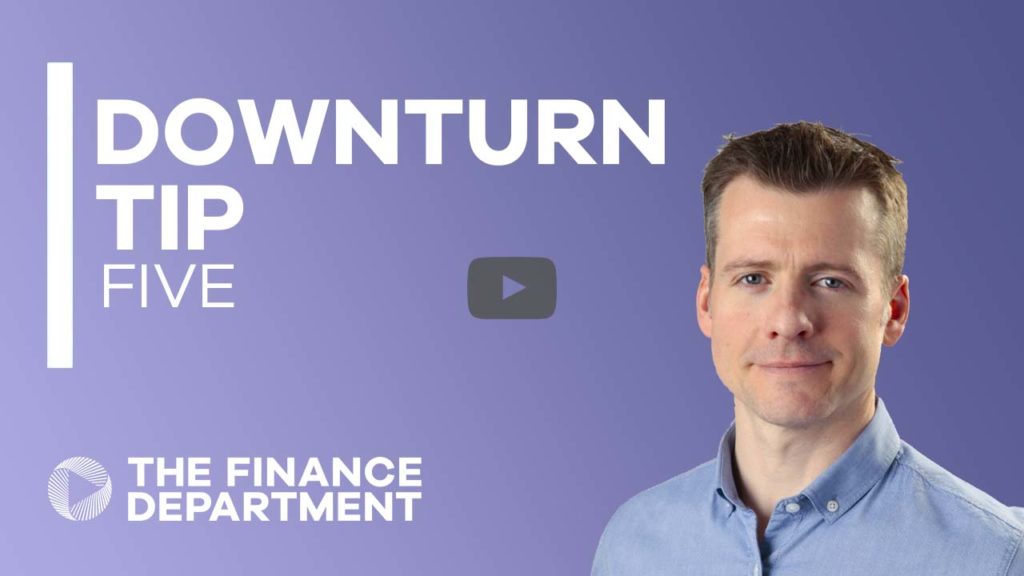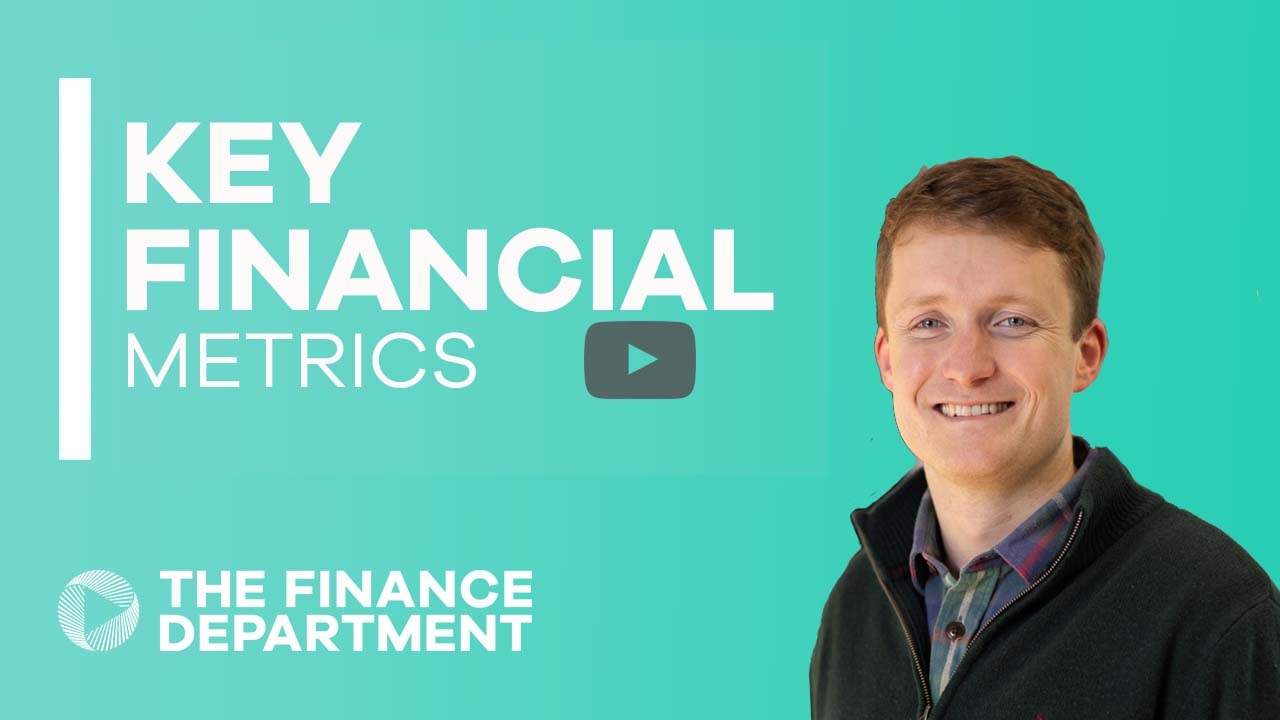Downturn Tip Five – Plan
Join today and start learning
TFD is the learning platform built for finance professionals.
This content is available as part of our bitesized video series.
Watch this video today by joining our free community.
Join today and start learning
TFD is the learning platform built for finance professionals.
This content is available as part of our bitesized video series.
Watch this video today by joining our free community.
Downturn Tip Five – Plan
Video information:
In this video, Phil discusses the importance of planning for the future when starting a business, and making sure all your financial information is stored and logged in a simple, effective way.
Final tip for me in this short series is, plan. Plan for the future.
That might mean a number of different things depending on your organisation. Obviously, the bank monetary policy, they’re forecasting a hugely macro level. That’s not relevant for most organisations. But you might be a recent startup, one of the record number of startups who’s been successful through COVID. You might be one of the record number of businesses founded during COVID, and you might have seen strong business success since then, and you might be doing quite well.
The volatility that exists in the macroeconomic climate can easily change that story for you. So you need to have no matter what your business size, you need to have a plan, to fail to plan, is to plan to fail as the adage goes.
That might mean anything from a very simple six month cash forecast laid out, you know, real basic kind of survival planning making sure that you don’t cut too close to your minimum cash thresholds. By that I mean, simple spreadsheet laying out all of your inflows in the top half, all of your outflows in the bottom half. Probably to keep things really simple day by day just so that you know what all your predicted inflows are going to be, what all your predicted outflows are going to be, don’t forget the irregular payments such as your quarterly rent or VAT or some of your annual premiums that you might not be thinking about on a weekly or monthly basis. Don’t forget to map those in, because they’re the hits that sometimes, you know, catch businesses out.
And by doing it on a daily basis, you don’t have to worry about whether, you know, receipts come in at the beginning of the month or the end of the month. It’s just there day by day. Yes, it’s quite a large spreadsheet, but it’s relatively simple to do if you’re familiar the structure of your business and your numbers as covered in previous points.
So, yes, you could be on one level, quite a simple organisation planning like that. Or you could take things to the next level and you could be performing multi quarter, multi year, P and L, balance sheet and cash forecasts that align to your strategy. Perhaps you’ve got a twenty percent growth target over the next three years or something like that, you need to have a forecast that actually supports the tactical decision making and investments that your business is going have to make in order to get there.
There’s no use in just having that target out there as a floating thing in the ether. You have to have a plan that takes you from where you are today to that strategic goal, a realistic plan as well. If you’ve got that kind of plan in place, then you can really leverage the power of scenario planning, a hugely under-utilized technique that I encounter in medium sized enterprises.
Scenario planning can mean anything, you know, it’s going through the exercise of considering the what if. Okay, we’ve got a forecast this is the structure of our business, the financial model for our business. But what if, what if our major supply has a fifteen percent, twenty percent cost increase on it. What if our labor wage inflation reaches the double digit inflation that some service sector businesses are already encountering.
No prediction is ever going to be totally accurate, but having gone through the mechanic of thinking about what that scenario might mean for you and your business, you know, you’re practicing that mental muscle about how you would react to situations.
So yes, overall planning is key, in whatever form it takes appropriate level for your business, but I would strongly advise that people use all of the discipline that they’ve built up through those previous tips and put it into looking at a lens focused on the future and what comes next.
Phil co-founded Mettryx following a 16 year finance career “in-house” across a range of industries, in order to provide senior, on-demand, finance services into SME organisations. His expertise range across fractional FD/CFO duties; FP&A consultancy; strategic finance projects support; international expansion; ERP/EPM implementations.
Video information:
In this video, Phil discusses the importance of planning for the future when starting a business, and making sure all your financial information is stored and logged in a simple, effective way.
Final tip for me in this short series is, plan. Plan for the future.
That might mean a number of different things depending on your organisation. Obviously, the bank monetary policy, they’re forecasting a hugely macro level. That’s not relevant for most organisations. But you might be a recent startup, one of the record number of startups who’s been successful through COVID. You might be one of the record number of businesses founded during COVID, and you might have seen strong business success since then, and you might be doing quite well.
The volatility that exists in the macroeconomic climate can easily change that story for you. So you need to have no matter what your business size, you need to have a plan, to fail to plan, is to plan to fail as the adage goes.
That might mean anything from a very simple six month cash forecast laid out, you know, real basic kind of survival planning making sure that you don’t cut too close to your minimum cash thresholds. By that I mean, simple spreadsheet laying out all of your inflows in the top half, all of your outflows in the bottom half. Probably to keep things really simple day by day just so that you know what all your predicted inflows are going to be, what all your predicted outflows are going to be, don’t forget the irregular payments such as your quarterly rent or VAT or some of your annual premiums that you might not be thinking about on a weekly or monthly basis. Don’t forget to map those in, because they’re the hits that sometimes, you know, catch businesses out.
And by doing it on a daily basis, you don’t have to worry about whether, you know, receipts come in at the beginning of the month or the end of the month. It’s just there day by day. Yes, it’s quite a large spreadsheet, but it’s relatively simple to do if you’re familiar the structure of your business and your numbers as covered in previous points.
So, yes, you could be on one level, quite a simple organisation planning like that. Or you could take things to the next level and you could be performing multi quarter, multi year, P and L, balance sheet and cash forecasts that align to your strategy. Perhaps you’ve got a twenty percent growth target over the next three years or something like that, you need to have a forecast that actually supports the tactical decision making and investments that your business is going have to make in order to get there.
There’s no use in just having that target out there as a floating thing in the ether. You have to have a plan that takes you from where you are today to that strategic goal, a realistic plan as well. If you’ve got that kind of plan in place, then you can really leverage the power of scenario planning, a hugely under-utilized technique that I encounter in medium sized enterprises.
Scenario planning can mean anything, you know, it’s going through the exercise of considering the what if. Okay, we’ve got a forecast this is the structure of our business, the financial model for our business. But what if, what if our major supply has a fifteen percent, twenty percent cost increase on it. What if our labor wage inflation reaches the double digit inflation that some service sector businesses are already encountering.
No prediction is ever going to be totally accurate, but having gone through the mechanic of thinking about what that scenario might mean for you and your business, you know, you’re practicing that mental muscle about how you would react to situations.
So yes, overall planning is key, in whatever form it takes appropriate level for your business, but I would strongly advise that people use all of the discipline that they’ve built up through those previous tips and put it into looking at a lens focused on the future and what comes next.
Phil co-founded Mettryx following a 16 year finance career “in-house” across a range of industries, in order to provide senior, on-demand, finance services into SME organisations. His expertise range across fractional FD/CFO duties; FP&A consultancy; strategic finance projects support; international expansion; ERP/EPM implementations.
Video information:
In this video, Phil discusses the importance of planning for the future when starting a business, and making sure all your financial information is stored and logged in a simple, effective way.
Final tip for me in this short series is, plan. Plan for the future.
That might mean a number of different things depending on your organisation. Obviously, the bank monetary policy, they’re forecasting a hugely macro level. That’s not relevant for most organisations. But you might be a recent startup, one of the record number of startups who’s been successful through COVID. You might be one of the record number of businesses founded during COVID, and you might have seen strong business success since then, and you might be doing quite well.
The volatility that exists in the macroeconomic climate can easily change that story for you. So you need to have no matter what your business size, you need to have a plan, to fail to plan, is to plan to fail as the adage goes.
That might mean anything from a very simple six month cash forecast laid out, you know, real basic kind of survival planning making sure that you don’t cut too close to your minimum cash thresholds. By that I mean, simple spreadsheet laying out all of your inflows in the top half, all of your outflows in the bottom half. Probably to keep things really simple day by day just so that you know what all your predicted inflows are going to be, what all your predicted outflows are going to be, don’t forget the irregular payments such as your quarterly rent or VAT or some of your annual premiums that you might not be thinking about on a weekly or monthly basis. Don’t forget to map those in, because they’re the hits that sometimes, you know, catch businesses out.
And by doing it on a daily basis, you don’t have to worry about whether, you know, receipts come in at the beginning of the month or the end of the month. It’s just there day by day. Yes, it’s quite a large spreadsheet, but it’s relatively simple to do if you’re familiar the structure of your business and your numbers as covered in previous points.
So, yes, you could be on one level, quite a simple organisation planning like that. Or you could take things to the next level and you could be performing multi quarter, multi year, P and L, balance sheet and cash forecasts that align to your strategy. Perhaps you’ve got a twenty percent growth target over the next three years or something like that, you need to have a forecast that actually supports the tactical decision making and investments that your business is going have to make in order to get there.
There’s no use in just having that target out there as a floating thing in the ether. You have to have a plan that takes you from where you are today to that strategic goal, a realistic plan as well. If you’ve got that kind of plan in place, then you can really leverage the power of scenario planning, a hugely under-utilized technique that I encounter in medium sized enterprises.
Scenario planning can mean anything, you know, it’s going through the exercise of considering the what if. Okay, we’ve got a forecast this is the structure of our business, the financial model for our business. But what if, what if our major supply has a fifteen percent, twenty percent cost increase on it. What if our labor wage inflation reaches the double digit inflation that some service sector businesses are already encountering.
No prediction is ever going to be totally accurate, but having gone through the mechanic of thinking about what that scenario might mean for you and your business, you know, you’re practicing that mental muscle about how you would react to situations.
So yes, overall planning is key, in whatever form it takes appropriate level for your business, but I would strongly advise that people use all of the discipline that they’ve built up through those previous tips and put it into looking at a lens focused on the future and what comes next.
Phil co-founded Mettryx following a 16 year finance career “in-house” across a range of industries, in order to provide senior, on-demand, finance services into SME organisations. His expertise range across fractional FD/CFO duties; FP&A consultancy; strategic finance projects support; international expansion; ERP/EPM implementations.








